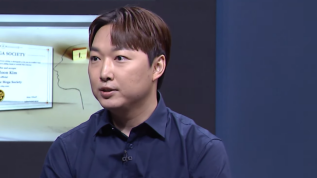The delegates to the United Methodist Church Pre-General Conference News Briefing approved a change in their media campaign from targeting a “generic” audience to one that marks “non-churchgoers.”
"We believe this ministry is a 21st-century expression of our Wesleyan heritage, taking the gospel to wherever people congregate," said the Rev. Elijah Stansell, a director of the Foundation for United Methodist Communications. The foundation sponsored a dinner Jan. 30 for participants at the briefing.
In addition to the change of face, key people in the campaign proposed that the church increase its advertising and develop specific messages for the youth from 2005-2008. The proposal will be presented to the General Conference in Pittsburgh, April 27-May 7.
The agency hopes to expand by 18 weeks annually the core advertising on cable television networks with an additional grant of $33.5 million. The agency would continue to provide funds from its budget for administrative costs, regional training and creation of local church resources.
The youth focused effort, "is an evangelistic peer-to-peer sharing of the gospel in a compelling multimedia approach, rather than a television advertising campaign," said Larry R. Hygh Jr., director of communications for the denomination's California-Pacific Annual (regional) Conference.
"The goal is to get youth to enter into a United Methodist youth ministry program and then to give them a reason to stay," said Hygh, who has been involved in the Igniting Ministry effort since its inception in 2001.
The youth effort is particularly significant since "the percentage of people younger than 30 who are part of the church now is at the lowest level in history," he said.
2001 statistics found that among the 8.3 million UMC members, less than .5 million were of youth fellowship ministries.
Therefore, the targeted youth expression would include advertising materials, local church resources, training, grants, and major online opportunities to exchange ideas, creative materials and music and to enter conversations with seeker youth. Many elements would be developed in collaboration with the denomination's Board of Discipleship.
If the 2004 General Conference approves the latest proposal, the core advertising funding "will enable us to continue to reach people in an environment where they are comfortable, and to say to them, 'We care about you,'" said the Rev. Larry Hollon, United Methodist Communications' top executive.
"Reaching the public using broadcast media … is an investment in our future as a relevant, vital and leading Protestant denomination," he said.







